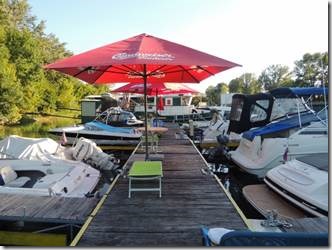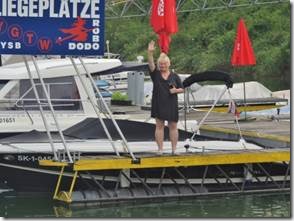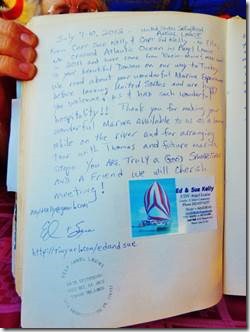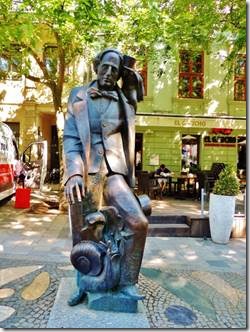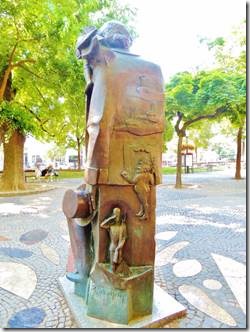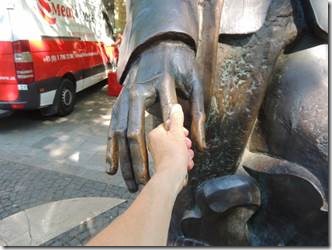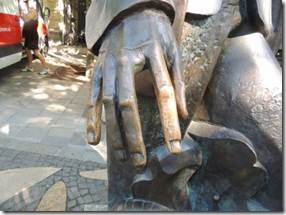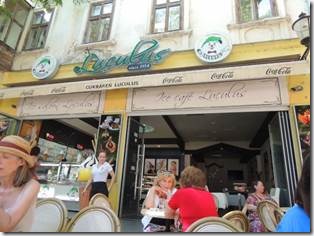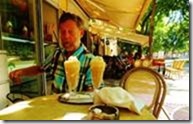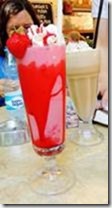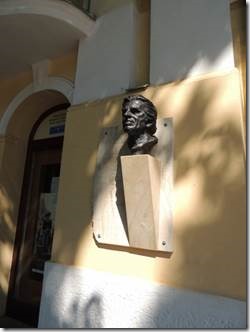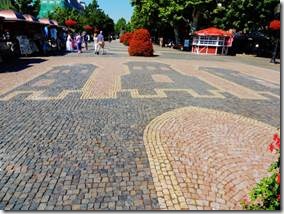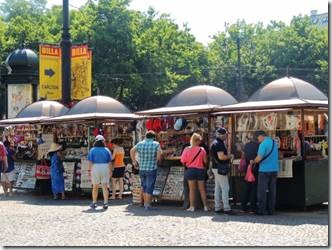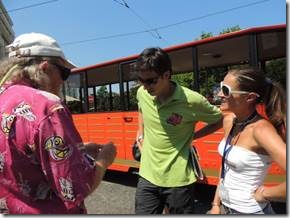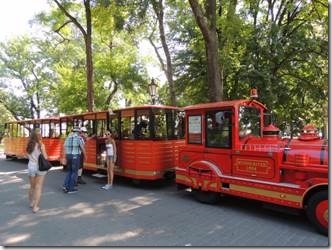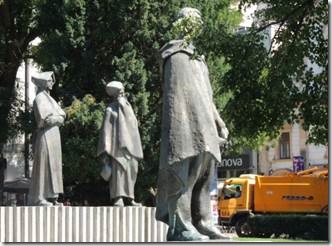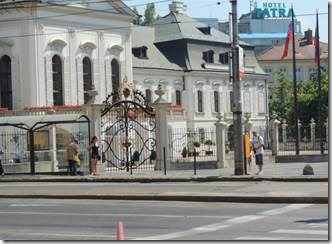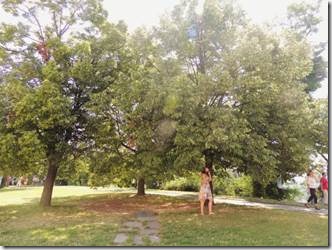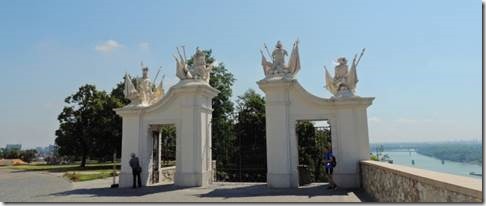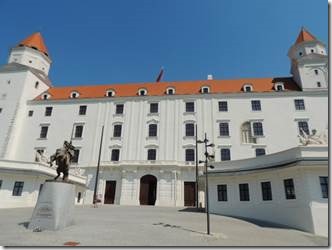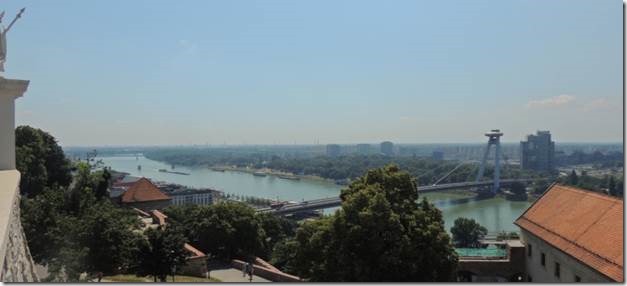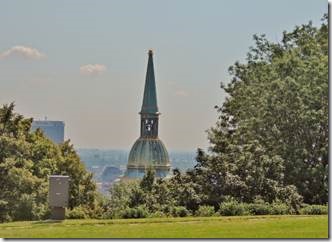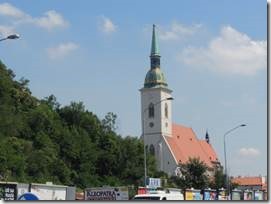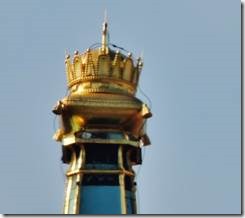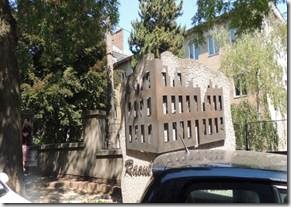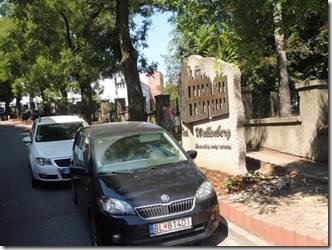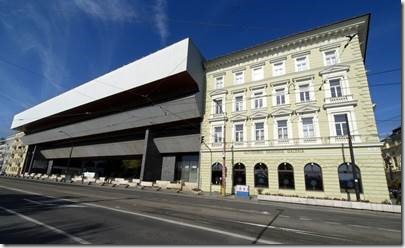Wiking Marina, Budapest
Jo napot kivanok.. which all means Hello according to my ancient Europe AAA guide.
It is a bright sunny morning for our second third day in Budapest. We arrived early afternoon and went off walking for hours… Yesterday Randal and I did “Jewish Budapest” and today it’s more touring, a chandlery and grocery store among other things.
This email takes us back to Bratislava, a city I really liked. This is email # 1 of several. Wifi is more iffy in Hungary where sim cards for our dongle are hard to get and really expensive so we’ll see. Not sure once we leave this marina what will be what for email.
I really have no knowledge of these countries we’re traveling through now or their histories. And it’s my first experience of Soviet run countries though the Russians are now gone and have become the “bad guys” in many ways. I need to do some reading. For several years we hosted many interesting business people from former and current Russian/Soviet countries for the Legacy International exchange and that was very rewarding.
Ru
|
http://www.dodohexe.szm.com/indexuk.htm Our docking resort is located in a calm romantic bay of Danube at kilometer 1864.8. Since 1990 we have pioneered in Slovakia offering services for boat owners. We are pleased to offer you security guarded docking facilities providing water, fuel and energy supplies. Technical assistance and services are backed by specialists from company IMIDJEX. Our guests are not only Slovak and Austrian boat owners, bikers cicling along Danube banks but also connoisseurs of barbecue fish specialities from pike, catfish or sturgeon. Delicious home made apple-pie will definitely be a mouth-watering experience. You can enjoy unforgettable sunset tasting a glass of our carefully selected Slovak and imported wines. We are looking forward to welcome you in our resort during the summer season to make the best of our tradition and hospitality. Sincerely yours. Dodo DoraMac was very happy to find a home with power and water at Dodo’s rather than just tied to a barge at the commercial dock across the way. Ella, widow or Dodo, now runs the marina with her son Robert and other family members. Very warm and helpful. The marina guestbook entry of our friends Ed and Sue Kelly who were there in July 7 2012, exactly 2 years ahead of us. |
|
Bratislava, capital of Slovakia and just an hour by train from Vienna, is the comeback kid among European capitals. A decade ago, the city was virtually a ghost town. But today, Bratislava is downright charming, bursting with colorfully restored facades, lively outdoor cafés, swanky boutiques, in-love-with-life locals, and — on sunny days — an almost Mediterranean ambience. World War II left Bratislava a damaged husk. Following the war, communists showed little interest in preserving the city’s heritage, razing the Jewish quarter to make way for their ultramodern New Bridge, erecting a highway that slices through the Old Town (though it will soon be diverted to a tunnel that runs beneath the Danube), and even selling the city’s medieval cobbles to cute German towns, which were rebuilding after the war and trying to restore some of their elegant Old World character. With the fall of communism in 1989, the new government began a nearly decade-long process of sorting out building rights and returning them to their original owners. By 1998, most of these property issues had been resolved, and owners were encouraged to restore their buildings. The city also did its part, replacing all of the street cobbles, sprucing up public buildings, and making the Old Town traffic-free. Bratislava was reborn, and life returned with a vengeance. The bustling centerpiece of Old World Bratislava is Main Square. From Easter through October, cute little kiosks, adorned with old-time cityscape engravings on their roofs, sell handicrafts and knickknacks. During the holidays, a Christmas market blankets the square. At the bottom of the square is a line of extremely atmospheric cafés, from Kaffee Mayer, an institution here since 1873, to Café Roland, housed in an old bank building with a coffee-filled vault. The buildings that surround Main Square date from different architectural periods, including Gothic and Art Nouveau. When these buildings were restored, great pains were taken to achieve authenticity, each one matching the color most likely used when it was originally built. The impressive Old Town Hall, with its bold yellow tower, stands at the top of the square. Near the bottom of the tower, a cannonball embedded in the facade acts as a reminder of Napoleon’s impact on Bratislava. Another reminder is the cartoonish statue of a Napoleonic officer bent over one of the benches on the square. With bare feet and a hat pulled over his eyes, it’s hardly a flattering portrait. This is just one of several whimsical statues dotting Bratislava’s Old Town. Most of these date from the late 1990s, when city leaders wanted to entice locals back into the newly prettied-up Old Town. Standing outside Kaffee Mayer, a jovial chap doffs his top hat. This is a statue of Schöner Náci, a poor carpet cleaner who, dressed in a black suit and top hat, brightened the streets of Bratislava during the communist days, offering gifts to the women he fancied. Another Bratislava fixture is the statue of ?umil “the Peeper,” popping out of a manhole with a grin plastered on his face (despite being driven over by a truck — twice). Exploring the Old Town provides a look at where this country has been. But wandering outside the center offers a look at where it’s headed. The city is busy transforming its entire Danube riverfront area into a people-friendly park. And just downstream from the Old Town is the futuristic Eurovea, resembling a computer-generated urban dreamscape come true. This development includes a riverside park, luxury condos, a modern shopping mall, and an office park. Despite massive progress, holdovers from the city’s communist past remain. The most prominent landmark from this time is the bizarre, flying-saucer-capped New Bridge. Locals aren’t crazy about this structure — not only for the questionable Starship Enterprise design, but also because of the oppressive regime it represents. However, capitalists have reclaimed the bridge in part, turning the space up top into a posh eatery called, appropriately enough, UFO. With 70,000 students at six universities, Bratislava has a youthful energy and optimism. You can feel their presence, especially at night. Because there are no campuses as such, the Old Town is the place where students go to play. And much of the partying goes on in former bomb shelters, built during the tense times around the Cuban Missile Crisis. Today these make ideal venues for clubs — right in the town, but powerfully soundproof. Bratislava was one of the big surprises of my travels this past year. What I once thought of as a drab, depressing place is now lively and joyful. Bratislava has blossomed into the quintessential post-communist Central European city, showing what can happen when a government and its people work together to rebuild a city. https://www.ricksteves.com/watch-read-listen/read/articles/booming-bratislava |
|
Hviezdoslav´s Square is also a home of Danish author of children´s stories, Hans Christian Andersen. This sculpture by Tibor Bartfay was made in honor of his visit in 1841 and is surrounded by characters from his stories. http://www.miceslovakia.com/en/article/curiosities-bratislava-en Years ago I bought Andersen’s travel book, A Poet’s Bazaar : A Journey to Greece, Turkey & Up the Danube. His entry about Pressburg, not Bratislava was written in June of 1841 It just seemed natural to hold his finger which is why it’s so shiny. |
|
Our first and last stop of the day: iced coffee in the morning and this strawberry thing in the afternoon. Thankfully we do a lot of walking or I’d be size x-large now. |
|
Jozef Kroner (1924–1998) Shop on Main Street The 1965 Oscar winner for Best Foreign Film, The Shop on Main Street (Obch o Na Korze) stars Josef Kroner as Tono Briko, a slothful Slovakian carpenter. The time is World War II, and the occupying Nazis are nationalizing all Jewish-owned businesses. To please his ambitious family, Tono takes the job of "Aryan comptroller" for a rundown button shop managed by an elderly Jewish woman (Ida Kaminska). He realizes that his new job won’t bring much in the way of money; the old woman, deaf as a post, realizes nothing, not even that a war is on. The shopkeeper’s Jewish friends, knowing that the woman will be carted off for extermination if she doesn’t have an Aryan coworker, offer to pay Tono if he’ll stay on as her assistant. Kroner and the old woman form a friendship, but when the order goes out that all Jews be rounded up, he panics and prepares to turn her over to the Nazis. His last-minute change of heart unfortunately comes too late. In contrast to the tragic denouement of the film, Shop on Main Street closes on a idyllic, dreamlike sequence, showing the smiling shopkeeper and clerk walking together through the countryside, free from all danger and fear. ~ Hal Erickson, Rovi http://www.nytimes.com/movies/movie/44467/The-Shop-on-Main-Street/overview |
|
Lovely boulevard with statues, small souvenir shops and tour guide hawking their tours |
|
We picked this one and the 4 of us had our own private tour being the only ones on the tour. Our lovely tour guide had been a travel agent and speaks about 5 languages. She shared what to me were sounded liberal views on government and criticisms of the former Soviets. What you would expect in this urban college town. |
|
Slovak National Uprising Square This bronze monument honors the anti-fascist uprising. The sculptor was Ján Kulich. http://www.commietravels.com/#!slovak-national-uprising-square/zoom/cjoe/imagesf0 SNP has statues in memory of Slovenske Narodne Povstanie (Slovak National Uprising of 1944, for which the Square is named). These statues are considered a prominent flaw in the city by some of the locals, as it was built by communists, who claimed that the Uprising (against the WWII pro-Nazi Slovak government) was all done thanks to them. http://www.bratislavaguide.com/snp-square http://www.jankulich.sk/skulptura%20en.htm is about the artist. I really like the heads he as done which you can link to. |
|
The newly sworn-in Slovak President Andrej Kiska lives in the Presidential Palace. “The Presidential Palace is the location of the annual open house (Den Otvorenych Dveri), where you can walk into the building and meet the President. However, the building is off limits to the public all other days of the year. It’s home to regular ceremonies with foreign officials, which involve periodic changing of the guards, brass bands, ceremonial changing of flags, as well as other pomp and circumstance. Gardens behind the Presidential Palace are well worth a visit when you feel like walking through a park. Also known Grassalkovic Palace, named for its former owner. During communist times, it was known as Ustredny dom pionierov a mladeze Klementa Gottwalda (Main house of Pioneers and Youth of Klement Gottwald). An urban legend about the Presidential Palace that is actually true is that when Rudolf Schuster was president, he had the building so lit up at Christmas time that, according to a Bratislavske Novinny article from 1999 a Swiss pilot flying from the High Tatras was running out of gas and mistook the Presidential Palace for landing lights at the Bratislava Airport. He landed his Cessna in the picturesque garden behind the Presidential Palace. The Presidential Palace is located at Hodzovo Namestie (Hodzovo Square), an important public transportation interchange in Bratislava and a convenient place to leave the bus and walk two minutes to the historical center. |
|
The linden tree and Slovenian statehood “Twenty years ago, on the day the Republic of Slovenia proclaimed its independence and sovereignty, a linden tree was planted in Republic Square (Trg republike) in front of the National Assembly building. Slovenia’s independence was also marked by a number of other linden trees which were planted all over Slovenia at that time.” Our guide, a very intellegent young woman, told us the Linden was the national tree of Slovakia but didn’t know why. I can’t find any confirmation that it is the national tree. The man running the tourist office in Komarno, Slovakia, our next stop, didn’t think it was true. But there are lots of stories about the Linden tree. http://www.fahnenversand.de/fotw/flags/cz-mb-li.html#li) connects the name Lipnik with the Linden (lipa) tree in the Czech Republic. And there is a Lipnik Nature Reserve near Ruse in Bulgaria. Lipnik is my maiden name so I need to visit the Lipnik Nature Reserve and maybe find out why it was so named. |
|
The area in front of the castle is called Yard of Honor. It is bordered by two triumphal gates and guard houses of the imperial guard. http://www.slovakia.com/castles/bratislava-castle/ I remember our guide telling us that the decorations on top of the gate represented each army that had been repelled at the castle…but I can’t prove that either and R,R and M don’t remember quite either. Production of trophies 17/07/2010 Clay is used as the basic material for the production of trophies. The 1:1 trophy mock-up is first made of clay and, subsequently, individual parts are grouped in the sculptural group. Plaster casting is then used as a mould for cast stone; when the mould is removed, the cast is (after necessary corrections) installed on the Triumphal Gates and/or Guardhouses of the Bratislava Castle. A total of 14 trophies will be installed. http://www.bratislava-hrad.sk/ |
|
http://www.bratislava-hrad.sk/en History and description of the restoration project. The Soviets, who now seemed to be blamed for much “less than lovely architecture” built this bridge but destroyed most of the old Jewish Quarter and historic buildings to do it. The “flying saucer” on the top has a restaurant that rotates. http://terkajeffko.blogspot.hu/2012/01/erasing-history.html is a really interesting blog about the Soviet distruction of historic buildings of Bratislava and the possible impact on tourism today. Slovakia –1966 footage of synagogue & destruction of Bratislava Jewish quarter By Ruth Ellen Gruber Thanks to David Kraus, here is some extraordinary footage from Bratislava in 1966, showing the beginning of the destruction of parts of the Old Town, including the historic Jewish quarter, to make way for the construction of the New Bridge. There are some remarkable shots of the twin-towered, Moorish style synagogue before its demolition in the path of the construction. |
|
“Between 1563 and 1830 St Martin’s served as the coronation church for Hungarian kings and their consorts, marked to this day by a 300-kg gilded replica of the Hungarian royal crown perched on the top of the cathedral’s 85-metre-tall neo-Gothic tower. At the beginning of September each year the pomp and circumstance of the coronation returns to Bratislava in a faithful reconstruction of the ceremony.” http://visit.bratislava.sk/en/vismo/o_utvar..asp?id_org=700014&id_u=1593&p1=3295 |
|
Raoul Wallenberg Memorial which I’d read about so just managed a photo when our red train passed by. At the end I asked our guide about it and she was surprised that I’d noticed. I told her I was Jewish and had read up about Jewish Bratislava. “Bratislava – The unveiling of a memorial to the Swedish diplomat Raoul Wallenberg took place on 11 November 2004 in the Zamocka utca, at the foot of the Castle Hill, Bratislava. The sculptor Klement Trisuliak"s monument depicts a broken wall with metal work showing a burning building and its frightened inhabitants. Raoul Wallenberg, the courageous Swedish diplomat then serving in Budapest, saved tens of thousands of Jewish men and women at the time of the country"s Nazi occupation. Many of those had been transported to Budapest from Bratislava and other places in Slovakia. The project has been an initiative of the Slovakian Council of Christians and Jews, whose Patron is Pavol Hrusovsky, President of Parliament, and its chairperson Stefania Salisová. Also present at the festive event were Slovakian EU Commissioner Ján Figel and the Mayor of Bratislava as well as diplomatic representatives from Sweden, Austria, Germany and Hungary. Markus Himmelbauer, General Secretary of the Austrian Coordinating Committee for Christian-Jewish Cooperation brought greetings from the International Council of Christians and Jews. Raoul Wallenberg came to Budapest on 9 July 1944. Since April 1944 more than 400,000 Jews from the Hungarian Provinces had been deported to Auschwitz. Only in Budapest some 200,000 Jews were still left. The situation deteriorated dramatically after the establishment of the fascist Pfeilkreuzler government in October 1944. Through the issuing of Swedish protective passports, Wallenberg saved thousands from deportation to Auschwitz-Birkenau and death marches to Austria – and therefore from certain death. Other diplomats did likewise. When Budapest was liberated in February 1945 by the Russians, there were still more than 100,000 Jews in the city, thanks to these life saving activities. In January 1945 Raoul Wallenberg was abducted by the Russians. His fate could never be discovered. Only in 1993 Russian authorities confirmed that he had been deported by the Soviet secret service and died in 1947. Wallenberg was one of the first to be named by Yad Vashem as one of the Righteous among the Gentiles. |
|
Slovak National Gallery http://slovakia.travel/en/exhibitions-in-the-slovak-national-gallery-free-of-charge Our guide wasn’t at all fond of the Soviet addition which in real life doesn’t look quite so interesting as this. |

